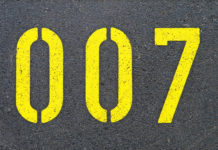What do you think Google’s editorial and technical requirements are? After reading this blog post, you will have a better understanding of what they are. From the guidelines in Google’s Search Quality Rater Guidelines (SQRG), we know that there is no clear answer to which practice would be acceptable under their editorial and technical requirements. In order to make sure that your website meets these guidelines, it is important to understand them thoroughly. We will discuss these guidelines in detail below so that you can start optimizing your site for search engines!
So what do Google’s editorial and technical requirements stand for? There are a couple of things that we need to consider before answering this question. The first thing is the purpose of these rules: They clarify how we should be constructing, assessing, and tuning our content so it meets users’ needs by articulating guidelines for search quality evaluation on both the editorial side (i.e., topics) and the technical side (i.e., indexing). Now let’s look at some examples from their Search Quality Rater Guidelines as well as common practices found in SEO today which may not be acceptable under these guidelines!
Raters must judge webpages based only on content within them; no third party websites or other websites with different content are to be used as sources of information.
It is not appropriate to build structured data markup on a web page or site which has low quality content, even if the website owner agrees.
Including your own text in images (e.g., inserting keywords into an image) for the purpose of ranking higher will likely fail Google’s algorithm and may result in that webpage being penalized by search engine algorithms such as Panda or Penguin.
Pages with deceptive titles should have their title changed so they accurately reflect the contents of the pages; this includes adding words like “advertisement,” “scam” etc.
Allowing search engines to index certain types of file formats can help users find what they’re looking for faster, but it also creates the potential for malicious software to exploit these formats.
Deceptive metrics are not allowed because they can lead people into making bad decisions, and webmasters may be penalized if we discover that their site contains deceptive content or is participating in fraudulent behavior.
It is acceptable practice under Google’s editorial and technical requirements to include keyword-rich anchor text links from other websites on your own website pages as long as the link does not appear misleading, spammy or harmful to human users (including crawling bots). You should also ensure that the page you’re linking to satisfies all of our quality guidelines before providing a link; doing so helps us improve search results for everyone.
Including keywords in titles will increase your chances for ranking higher in organic search results and for showing up in the knowledge panel.
Which Practice Would Be Acceptable Under Google’s Editorial and Technical Requirements?
Including keywords in titles will increase your chances for ranking higher in organic search results and for showing up in the knowledge panel.
Lead people into making bad decisions, and webmasters may be penalized if we discover that their site contains deceptive content or is participating in fraudulent behavior.
It is acceptable practice under Google’s editorial and technical requirements to include keyword-rich anchor text links from other websites on your own website pages as long as the link does not appear misleading, spammy or harmful to human users (including crawling bots). You should also ensure that the page you are linking to is relevant and provides unique value to the reader.
The following practices are NOT acceptable under Google’s editorial and technical requirements:
Including keyword-rich keywords in your domain name, subdomain names or directory file pathnames.
Inserting hidden text on a webpage, such as meta tags containing links or rich snippets with links inside them. It is also not appropriate for site owners to create pages that contain only hidden content designed solely to manipulate search engine rankings (e.g., cloaking). Hidden text may be detected by Googlebot if it appears alongside visible text of similar color intensity within textual paragraph areas of webpages without clear demarcation between what is visible and what is not; this is a potential violation of Google’s quality guidelines.
When the practice is unacceptable under google’s editorial and technical requirements, when it does not violate any laws or policies, you can still make changes to your site that don’t result in ranking penalties (e.g., adding content). When deciding which practices are acceptable on your own website we recommend asking yourself: Is this something I would want my mother-in-law to see?
If you have questions about what practices may be considered spammy by Google please take our quiz at:
Should You Be Concerned About Spammy Practices On Your Website? Quiz
or contact us for more information!
The following practices ARE acceptable under Google’s Editorial…
Conclusion paragraph:
You may have a better understanding of Google’s editorial and technical requirements now. We hope that you will start optimizing your site for search engines so that it meets these guidelines! If not, let us know how we can help or if there are any other topics in SEO you would like to learn about. Our team is ready to answer all questions and provide the best service possible!










